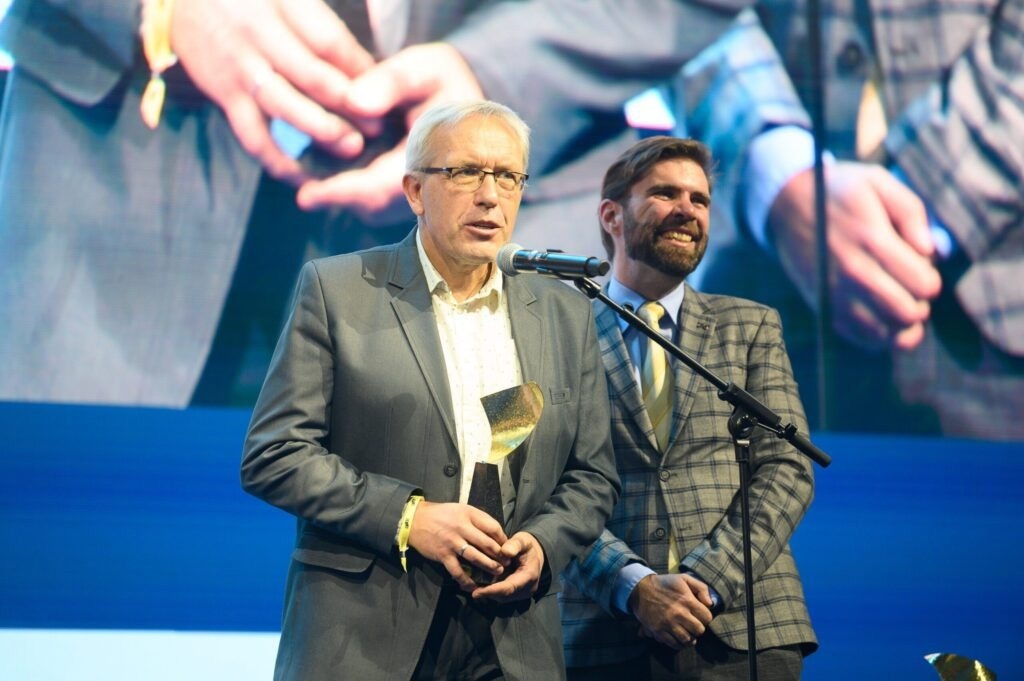
KTU Professor Darius Viržonis. Image Credit: Vygintas Skaraitis
The researchers believe that gravimetric sensors are a perfect alternative to electrochemical sensors currently in use, as they are more sensitive and use less energy.
Gravimetric Gas Sensors are Already Attracting Investors’ Attention
The team of scientists came up with an idea to apply a certain measurement principle, gravimetry, to the development of the sensors. Viržonis believes that the invention is a significant achievement.
Gravimetric gas sensors are an innovation, and we are delighted that our prototypes are already attracting interest from potential users. Perhaps we will be able to become forerunners not only in science, but also on the market.
Dr. Darius Viržonis, Scientist, Kaunas University of Technology
The sensors they have developed work based on micro-technology-based ultrasonic transducers (CMUTs), explains the researcher: “This is a way to make arrays of microscopic-sized cells that vibrate at a frequency of several million times per second. As the vibrating elements are very small, their moving mass is also small, which makes them very sensitive to external objects attaching to their surface.”
Gravimetry relies on variations in the oscillation frequency of sensing elements in sensors that detect changes in mass and air pollution. This allows for the identification of particular molecules and bound substances.
The scientific team chose to record greenhouse gases like carbon dioxide, methane, water vapor, sulfur dioxide, nitrogen oxides, and diesel fuel molecules using the sensors because they were concentrating their research on the environment. Viržonis claims that this technology can detect virus DNA and offers a wide range of possibilities for biological pollution detection.
When speaking about modern technologies, Dr. Viržonis, a scientist at KTU, points out that while they make it possible to develop and produce a wide range of gas sensors, the majority of the market is still dominated by so-called electrochemical gas sensors, which do not adhere to the ever-increasing safety and environmental standards.
Gravimetric gas sensors are one of the booming alternative sensor technologies that have the potential to replace many of the electrochemical sensors currently in use, as they have higher sensitivity, better selectivity, interact with different gases, and consume significantly less energy.
Dr. Darius Viržonis, Scientist, Kaunas University of Technology
The Technological Basis for the Diagnosis of Viral Diseases
Improving the affordability and accessibility of air quality monitoring is one of the study’s goals. The scientist claims that the sensors’ size aids in achieving this objective.
Our sensors can in a way be seen as scales weighing molecules. If you make the scales very small, you not only increase their sensitivity and accuracy but also reduce their cost and energy requirements. This creates the technological prerequisites to have more functionality at the same price or maybe even cheaper.
Dr. Darius Viržonis, Scientist, Kaunas University of Technology
Dr. Viržonis asserts that technical conditions will be created for improved control of anthropogenic greenhouse gas emissions if air quality or pollution measurement devices become widely available in terms of cost and functionality, which is possible with the aid of new technology invented by scientists.
KTU Researcher says, “If this control is ensured, we will all live under cleaner air, we will have more biodiversity, and perhaps we will be able to reclaim the territories in East Asia that have already been practically lost to humanity due to air pollution.”
The scientist emphasizes that this project is technological and will be especially helpful for future health research as she looks to the future. It is an invention with enormous potential because the same technological foundation can enable the development of more sensitive and adaptable instruments for the diagnosis of viral diseases.
The award is a proof of that.
Dr. Viržonis says, “It is as important for a scientist as it is for an artist or any other creative professional to be noticed, seen, and appreciated. Together with the project team, we took this award as a form of recognition and encouragement to keep going, which is what we are doing now.”
The scientists have begun the process of creating a start-up company called Orius, whose goal is to identify the appropriate markets and consumer base for the sensors they have developed and to bring the developed technological solutions to market.